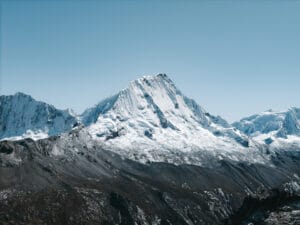The surroundings of the Matilde spring
At the foot of Puntaló (572 m), next to the Chóvar ravine, the springs of Matilde and Gregori are born. The calm and beauty of the surroundings have turned this traditional spot into a place not to be missed.

The permanent spring of Matilde rises in the shade at 14.4 °C, between Buntsandstein rocks at an altitude of 377 metres. It is very close to the orchard of the old Andalusian farmstead of Alfetx, documented between 1377-1573, which was irrigated thanks to the dams that can still be seen in the Chóvar ravine and the pond. The spring, in turn, fed the vegetable garden on the right bank by means of an underground conduit and a basin. In other words, we have before us the remains of an ancient irrigation system of Muslim origin, reused and extended by the new settlers from the 17th century onwards.
The story takes us back to 1929, when the married couple formed by Matilde Brown and Emilio Pérez inaugurated their summer house: Villa Sevignac, popularly known as the Casa del Negre after the servant they had, originally from the African island of Fernando Poo, where Emilio worked as a colonial official. It seems that his regular visits to Eslida and the fountain ended up giving it its name.

In the vicinity of the spring is the Matilde cave, a cavity of speleological interest with a depth of about 50 metres explored. According to recent research by Jesús Almela, the lower part of this cave is flooded by the losses of the Chóvar ravine in the section following the weir. This explains the construction of the dam to divert water for agricultural use, based on careful observation of the behaviour of nature.
From Matilde we can follow a pleasant and cool path that, among ferns, mosses, cork oaks and aromatic herbs, will lead us in a few minutes to the intermittent spring of Castro.
Fosques Surroundings
Fosques is undoubtedly one of the best-known and most widely-regarded springs in Eslida. Nowadays it is part of a much larger irrigation network than in medieval times, when it supplied the spring of the old Andalusian farmhouse of Beniçahada, now Berissanda. According to archaeological evidence, it seems that the water from this source arrived there by gravity through a stream, crossed the slope of the Rambla d’Aín by means of a channeled aqueduct supported by circular pillars, and was emmagatzemava in the basin that still exists at the foot of where the farmhouse was located until 1526.

The perennial spring of Fosques rises from the red sandstone at an altitude of 18.7 °C, at 375 metres above sea level. Access to the site changed in 1964, when the Town Council agreed to develop the path due to two important facts: a previous analysis (1953) qualified the water from the spring as “drinking water, chemically considered” according to the standards of the time, and Eslida was becoming a family tourist destination that needed adequate space. At that time, the Panera picnic area was also built, a meeting place in the middle of nature. In 1996, work was carried out to increase the number of exit canons to the current six.
From Fosques we can reach the Ferro, Fonillet and Sant Josep springs in a few minutes. Along the way we will enjoy a privileged view of the orchard and the dry land that stretches all the way to the end of the stream and the mountains that surround it, enveloped by monumental trees and ancient and simple structures. The water-bearing basin is a reservoir of amphibians, which is why it is so important to avoid the discharge of toxic substances that we carry from home and to maintain their habitat.

A traditional composition, the “Jota d’Eslida”, ends by saying: “We bid farewell to the style of our town: Visca el Cristo del Calvari i que dure l’aigua de Fosques” (Long live the Christ of Calvari and may the water of Fosques last).
By Òscar Pérez Silvestre











